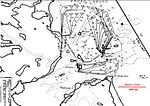Fort Strong

Fort Strong is a former U.S. Army Coast Artillery fort that occupied the northern third of Long Island in Boston Harbor. The island had a training camp during the American Civil War, and a gun battery was built there in the 1870s. The fort was built in 1893-1906 during the Endicott period of expansion in U.S. coast defense, and was part of the Coast (later Harbor) Defenses of Boston. Formerly, it was also known as Long Island Military Reservation. Before World War I, a large station for handling submarine mines was added to the fort's defenses. Prior to World War I the fort was probably manned by over 1,000 soldiers. During World War II, two batteries of 3-inch guns (Basinger and Stevens) defended channel minefields, but the big guns and other 3-inch batteries (except for the AA guns) were decommissioned. Declared surplus in 1947, the fort served as a Nike missile site until 1961, and was redeveloped in 2005-2009 for a children's summer camp and later a homeless shelter. However, in 2014 the island's bridge was demolished due to safety concerns, and all activity ended.
Excerpt from the Wikipedia article Fort Strong (License: CC BY-SA 3.0, Authors, Images).Fort Strong
Long Island Road, Boston
Geographical coordinates (GPS) Address External links Nearby Places Show on map
Geographical coordinates (GPS)
| Latitude | Longitude |
|---|---|
| N 42.329988888889 ° | E -70.955980555556 ° |
Address
Fort Strong
Long Island Road
Boston
Massachusetts, United States
Open on Google Maps









